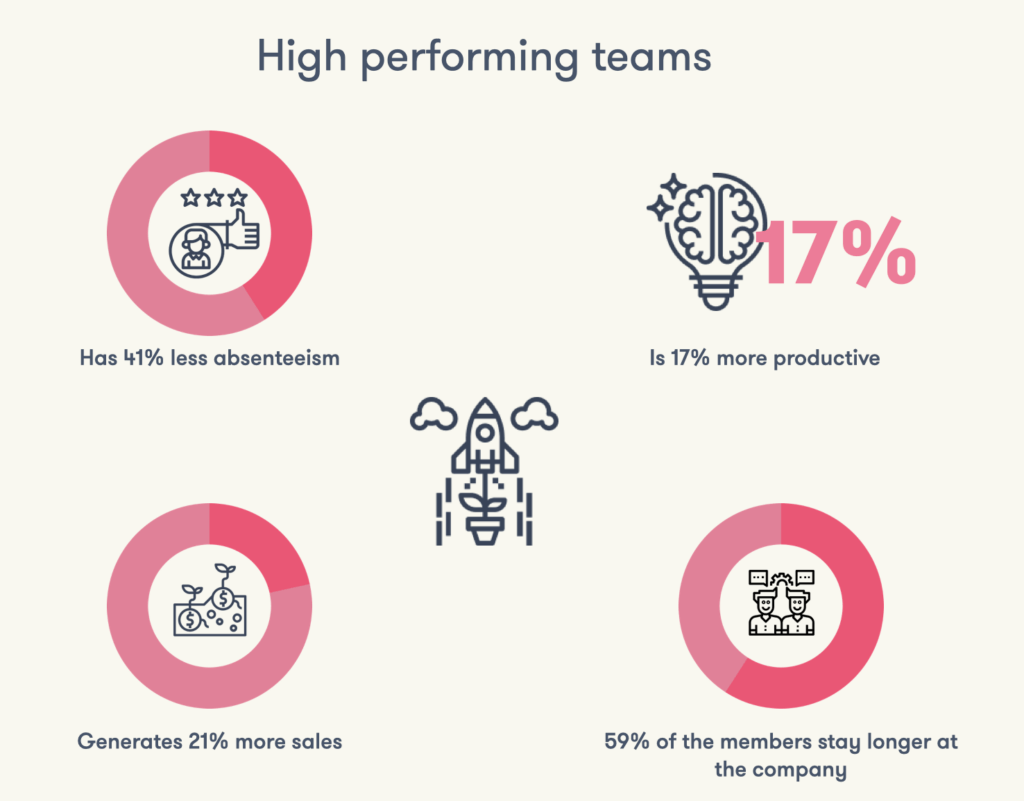Good collaborations are important in all organizations. When people work together, synergies emerge. The results we create when we work well together are significantly greater than the sum of our achievements.
By building on the thoughts of others and taking advantage of the group's different perspectives, experiences, and knowledge, the group can solve the most complex challenges.
Close collaboration in groups motivates employees while enabling them to work more efficiently, support each other, learn and develop together.
These effective collaborations are what we call teamwork and are very central to an organization in change.
" Unity is a strength… when there is teamwork and cooperation, wonderful things can be achieved ”
- Mattie Stepanek
But first of all, what is a Team?
A team is a group of people put together to take on common challenges and strive for one or more common goals as smoothly and effectively as possible. A team can be created for a shorter project or individual tasks but with the same purpose of striving to solve the common challenges.
Characteristics of a team:
- A group of people with at least three members and a maximum of one hundred.
- The members have skills that complement each other.
- They are dedicated to the same purpose and goal.
There are different kinds of groups, right?
The most common ways to organize people into different types of groups are:
Temporary working groups

Employees can be organized into temporary workgroups for various reasons, e.g. to fix a specific problem or deal with an emergency. The most
common temporary working group is the project group. These are working groups created to carry out a specific project until it is ready. Normally, members come from different parts of the company and also perform other tasks related to their home department. When it comes to the project, they respond to the project manager.
Functional teams

In these teams, all members belong to the same functional area and a single manager is responsible for the management of the entire group. The manager also usually handles the contact with the rest of the organization. In companies with a strictly formal hierarchy, it is very common to organize employees into functional teams such as personnel, finance departments, or similar specialized groupings.
Cross-Functional teams

In this case, the working group consists of members from different areas of
activity and its members usually have the same hierarchical level. This type of working group is usually formed to work towards a common goal, where the group members complement each other's knowledge, which often gives better and more creative results.
Self-governing teams

This grouping consists of employees who work in an extremely integrated
way with close cooperation because they do not have a formal leader. The members together define the division of work, the areas of responsibility, and the distribution of tasks, and make their own decisions in order to reach the set goal.
The high-performing team
There are many definitions of a high-performing team, but WilburFlow defines a high-performing team as a group of individuals who, with close collaboration and communication, put people at the center, complement each other's skills and with a common mindset drive innovation and achieve their high common goals.
We see high-performing teams as close-knit teams that work on the basis of processes that give all members the opportunity to meet all the challenges they face to achieve the team's goals in a team climate characterized by trust and mutual respect where people are comfortable being themselves.
High-performing teams create results by sharing the same values, mindset, tools, purpose, and goals. They are aligned and create cross-border collaboration through a shared set of understanding of actively seeking feedback and learning and growing together and as individuals.
The benefits of high-performing teams
Studies clearly show that when organizations invest in training their leaders and employees by developing high-performing teams, it provides significant gains and returns on investment.
These benefits apply not only to those for the individual working groups but also to the organization as a whole.
Performance is contagious and the outcome is simply committed and happy employees who learn more, communicate more effectively with other parts of the organization, and produce more. This can be seen in a study from Gallup that shows in comparison with non-high-performing teams what advantages high-performing or committed teams have.

https://www.gallup.com/workplace/236366/right-culture-not-employee-satisfaction.aspx
Conclusion
The benefits of having a high-performing team are numerous. Not only does it make sure that the projects that you work on are successful but it also ensures that your employees are happy and engaged in their work. When everyone is working toward the same goal, each satisfied with the work he or she is doing, there is nothing to complain about. You can´t ask for anything more than that.
Are you starting up a new team, getting more teams to join your unit, or just wanting to understand more about building high-performing teams we recommend you to subscribe to our monthly newsletter, it will be filled with DI Y tips and tricks for building high performing teams.

Yeah, and don´t forget to smile, it looks good on you!
/ Joacim Alm
Founder of WilburFlow
